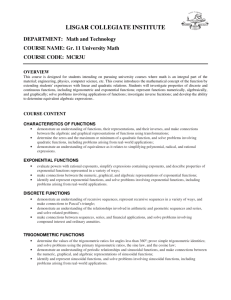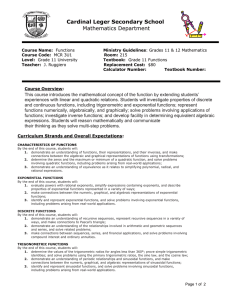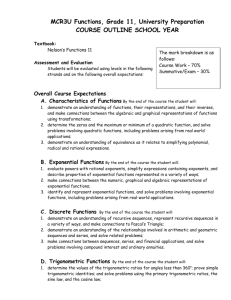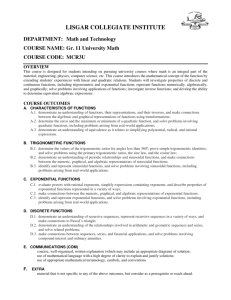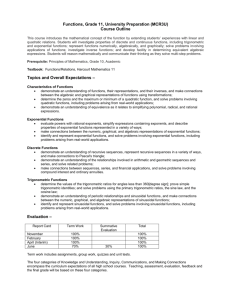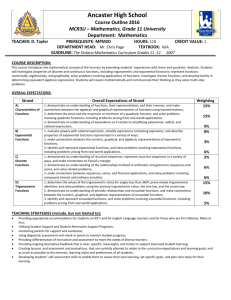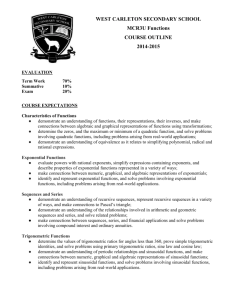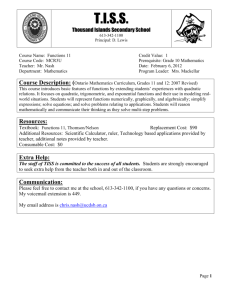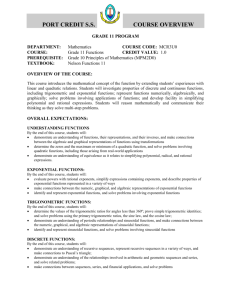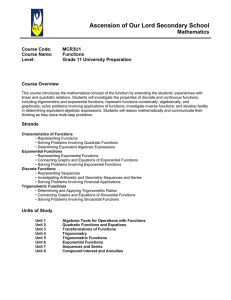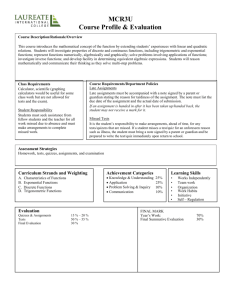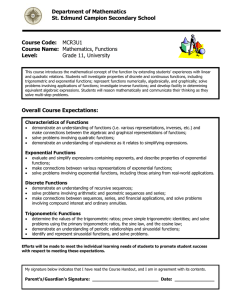Functions, Grade 11, University Preparation (MCR3U)
advertisement
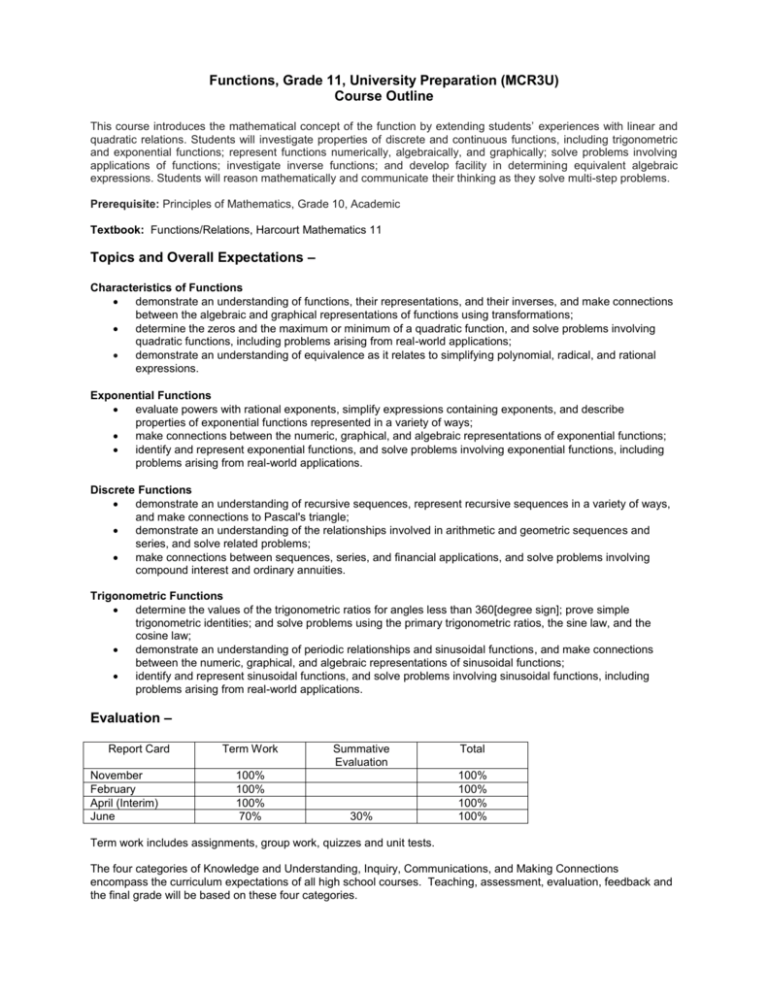
Functions, Grade 11, University Preparation (MCR3U) Course Outline This course introduces the mathematical concept of the function by extending students’ experiences with linear and quadratic relations. Students will investigate properties of discrete and continuous functions, including trigonometric and exponential functions; represent functions numerically, algebraically, and graphically; solve problems involving applications of functions; investigate inverse functions; and develop facility in determining equivalent algebraic expressions. Students will reason mathematically and communicate their thinking as they solve multi-step problems. Prerequisite: Principles of Mathematics, Grade 10, Academic Textbook: Functions/Relations, Harcourt Mathematics 11 Topics and Overall Expectations – Characteristics of Functions demonstrate an understanding of functions, their representations, and their inverses, and make connections between the algebraic and graphical representations of functions using transformations; determine the zeros and the maximum or minimum of a quadratic function, and solve problems involving quadratic functions, including problems arising from real-world applications; demonstrate an understanding of equivalence as it relates to simplifying polynomial, radical, and rational expressions. Exponential Functions evaluate powers with rational exponents, simplify expressions containing exponents, and describe properties of exponential functions represented in a variety of ways; make connections between the numeric, graphical, and algebraic representations of exponential functions; identify and represent exponential functions, and solve problems involving exponential functions, including problems arising from real-world applications. Discrete Functions demonstrate an understanding of recursive sequences, represent recursive sequences in a variety of ways, and make connections to Pascal's triangle; demonstrate an understanding of the relationships involved in arithmetic and geometric sequences and series, and solve related problems; make connections between sequences, series, and financial applications, and solve problems involving compound interest and ordinary annuities. Trigonometric Functions determine the values of the trigonometric ratios for angles less than 360[degree sign]; prove simple trigonometric identities; and solve problems using the primary trigonometric ratios, the sine law, and the cosine law; demonstrate an understanding of periodic relationships and sinusoidal functions, and make connections between the numeric, graphical, and algebraic representations of sinusoidal functions; identify and represent sinusoidal functions, and solve problems involving sinusoidal functions, including problems arising from real-world applications. Evaluation – Report Card November February April (Interim) June Term Work 100% 100% 100% 70% Summative Evaluation 30% Total 100% 100% 100% 100% Term work includes assignments, group work, quizzes and unit tests. The four categories of Knowledge and Understanding, Inquiry, Communications, and Making Connections encompass the curriculum expectations of all high school courses. Teaching, assessment, evaluation, feedback and the final grade will be based on these four categories.
